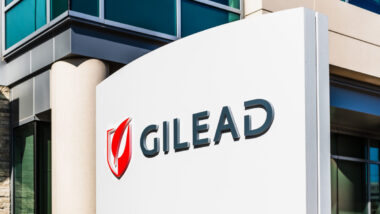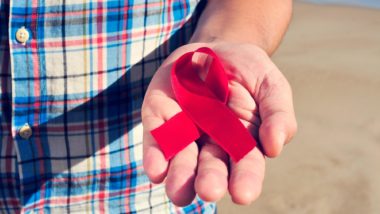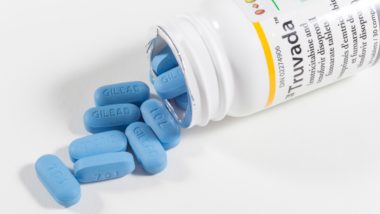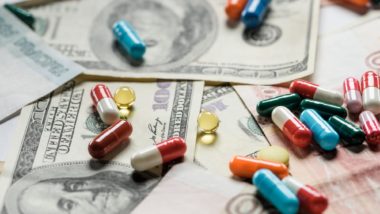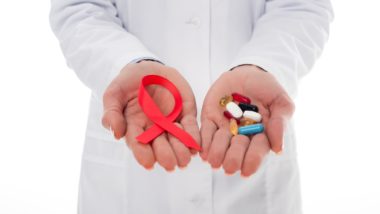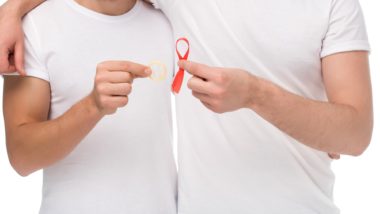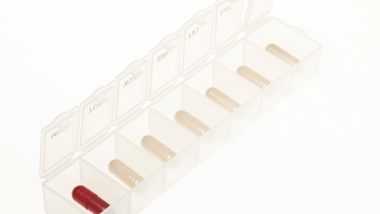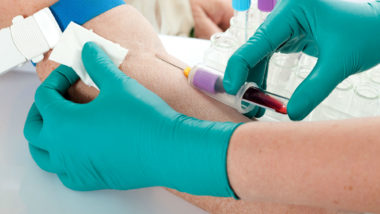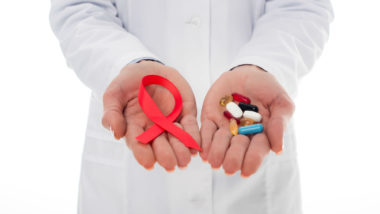Top Class Actions’s website and social media posts use affiliate links. If you make a purchase using such links, we may receive a commission, but it will not result in any additional charges to you. Please review our Affiliate Link Disclosure for more information.

According to an SM Daily Journal article posted on Apr. 22, 2019, 50 plaintiffs registered their complaint in the San Mateo County California Superior Court this spring. The lawsuit claimed they experienced tenofovir side effects like acute and chronic kidney disease and impairment along with osteomalacia—bone softening—and associated fracturing while the company pursued maximum original patent profits.
The Timeline
The original oral formulation of tenofovir Disoproxil Fumarate (TDF) was created from an intravenous version purchased by Gilead from a Czech developer. Purportedly questioning the marketability of an intravenous formula which would theoretically be 100 percent bioavailable, the defendant was forced to magnify the dosage considerably in order to make the pill form effective. TDF was marketed as Viread and spin-offs of this drug in combination forms later included Atripla, Complera, Stribild, and Truvada.
The problem was that tenofovir side effects stemming from the extremely high necessary dosage were a heavy burden. Then, according to a May 2016 article in the Los Angeles Times, hope was on the horizon. Gilead discovered a less toxic version of the HIV drug in which a quarter of the dose was needed to be effective. The version was known as tenofovir alafenamide (TAF) and it purportedly showed a lot of promise.
The breakthrough was around the time of the approval by the U.S. Food and Drug Administration (FDA) of Viread. Gilead continued to pursue the development of the less toxic version for about three years, sponsoring clinical studies in the greater Los Angeles and other key metropolitan areas. The Los Angeles Times article indicated that optimism ran high and the defendant was ramping up for further studies when it was suddenly tabled in 2004.
Positive data generated from the early research and clinical studies seemed to go underground, remaining unpublished and unacknowledged. Meanwhile, TDF-based drugs for HIV like Viread soared in popularity and scored $11 billion dollars in annual revenue for the pharmaceutical firm.
As quickly as it was tabled in 2004, new interest was stoked by the company in the less toxic version in 2010. Development resulted in the November 2016 approval of the TAF-based HIV drug Genvoya. Timing is the key issue here.
If the dropping of TAF research and development had continued, the patent on TDF formulations would have expired in 2018 and the company’s domination over HIV treatment globally would have waned. Plaintiffs allege that the delay in rolling out the less toxic HIV medicine was purposeful to maximize profits over the long haul at the expense of the patients they aimed to treat.
One such patient was Sean S. He purportedly initiated treatment with Viread in his forties and was discovered to have a severely deteriorated skeletal system likened to that of an 85-year old woman within just a few years, according to a POZ May 2016 article.
How Do U.S. Drug Patents Work?
According to the FDA, drug patents are considered a property right and fall under the jurisdiction of the U.S. Patent and Trademark Office. They can be instituted while a drug is under development but not yet technically approved for commercial circulation. The specifics of patent term length is determined according to current law. Presently, patents run approximately 20 years from the day of patent application.
A secondary term that often accompanies any discussion of a drug patent is exclusivity. Exclusivity, according to the FDA, determines what delays and stops may be put upon the development and approval of competitive drug formulations or supplements once a drug is approved. While separate concepts entirely, a patent and exclusivity may or may not operate at the same time. The entity behind a new drug application (NDA) must meet certain legal requirements in order to go into effect.
The FDA must handle exclusivity rights in such a way as to encourage innovative efforts at creating and developing drug solutions to common health problems. At the same time, a balance needs to be struck between rewarding innovation and allowing the general public access to drugs which under exclusive rights might be prohibitively expensive. Exclusivity periods can run three to seven years in most cases.
The Case of Truvada
Truvada—a TDF-based combination drug created by Gilead Sciences—was approved in 2012 for the prevention of HIV. According to The San Francisco AIDS Foundation, the acronym for this is PrEP which stands for pre-exposure prophylaxis or treatment to prevent an HIV infection from occurring before actual exposure to the virus occurs.
The government stepped in, as indicated by a May 2019 Bloomberg article, by funding Gilead’s research for years before reaching this celebratory milestone. Nevertheless, great controversy exists regarding why statistics reveal a stall in HIV prevention seven years later. It is felt by just a tiny portion of potential recipients are getting access to Truvada because of its enormous price tag.
It is estimated that it costs each recipient $21,000 a year to be on the drug which makes little economic sense to the average citizen—let alone insurance companies—if the patient in question doesn’t have the disease in the first place.
Physicians and activists in the AIDS arena claim that patents held by the U.S. Centers for Disease Control and Prevention (CDC) need to be used as leverage against Gilead in order to drive down this high annual cost and make it more accessible to the public. Some say seeking royalties from Gilead might have some effect on the price as well.
The Bloomberg article revealed that on May 16, 2019, this controversy was taken to Capitol Hill and discussed intently between the House Committee on Oversight and Reform and the current Chief Executive Officer (CEO) of Gilead, Daniel O’Day.
The CEO claims the company is doing all it can to reduce the price of the PrEP drug by donating it free to patients without health insurance and giving financial assistance to those covered but unable to afford the sizeable copay levied by their insurance companies.
The CEO went on to complain and posture that the CDC’s alleged patents were not valid or enforceable. He claimed that it was Gilead in and of itself which developed Truvada. Nevertheless, the federal government did obtain patents on the two drugs in Truvada—TDF and emtricitabine—exclusively for HIV prevention after engaging in primate experiments which provided data suggesting that the combination was much more effective at HIV prevention that use of either singular ingredient.
It was postulated by a Yale Law School researcher and patent attorney in a related interview that Gilead has shown every intention of using the government’s technological equipment without honoring any commitment—written or presumed—to pay it forward to the American people.
In addition to Truvada’s development process, there was a clinical trial whose data was published in 2010. According to the Bloomberg article, the lead author of the trial claimed that Gilead merely provided active medicine and placebos and no other support. Daniel O’Day claimed that Gilead provided two co-authoring researchers to the effort.
He also claims that the stall on HIV prevention is more than likely attributable to fears surrounding homosexuality, the social stigmatization of those that come forward and admit to an ‘alternate lifestyle’ and a general lack of psychosocial awareness among treating physicians and nursing staff.
A Donation Takes Care of It All
In a May CNBC.com article, it was revealed that Gilead Sciences has arranged an agreement with the Trump administration to donate enough PrEP drugs to bring down the risk of HIV transmission for close to a quarter million people a year.
The head of the U.S. Department for Health and Human Services (DHHS) claimed that this agreement will likely extend for five to ten years or until the end of 2030. This donation amounts to an average of $1800 monthly per head.
As a point of reference for understanding the limited scope of this donation, it is important to realize that, according to an opinion piece published by The Hill on May 21, 2019, the 200,000 benefiting individuals represent less than a fifth of those that could be helped from the making the drug more available. It will purportedly cost the company less than 1 percent of its $3 billion annual revenue from Truvada.
According to the article, while it is not unexpected that a corporation will ultimately act on behest of its own profit at the expense of the citizenry of the U.S., questions abound as to why the CDC has not pulled strings in order to address the problem.
The meeting with the House Oversight Committee might just represent the start of holding pharmaceutical companies accountable. Perhaps asking for royalties which could support a public health program for HIV prevention will be the next step and be much more effective than relying on miniscule donations relative to the problem at hand, opines the article.
Truvada Side Effects
While Truvada is PrEP-approved, it is still beset with known kidney and bone side effects which were allegedly downplayed by Gilead in the first place. It is a mixed-bag blessing, so to speak. This most recent lawsuit over the HIV drug is not the first of its kind.
A man filed a Truvada lawsuit last July against Gilead related to bone density issues secondary to the drug. He started taking it when he was 26 and had no medical history of skeletal issues, but was found to have osteopenia after a short time on the medication regimen.
Other drugs of this class have also come under fire. All are creations of Gilead Sciences.
If you or a loved one has suffered from severe bone or kidney side effects while taking an HIV drug containing tenofovir, you may qualify for this HIV medications lawsuit investigation. An HIV drug side effects lawsuit can help to recover damages for medical bills, lost wages, and pain and suffering. Learn more by filling out the free form on this page.
ATTORNEY ADVERTISING
Top Class Actions is a Proud Member of the American Bar Association
LEGAL INFORMATION IS NOT LEGAL ADVICE
Top Class Actions Legal Statement
©2008 – 2024 Top Class Actions® LLC
Various Trademarks held by their respective owners
This website is not intended for viewing or usage by European Union citizens.
Get Help – It’s Free
Join a Free HIV Medications Lawsuit Investigation
If you qualify, an attorney will contact you to discuss the details of your potential case at no charge to you.
PLEASE NOTE: If you want to participate in this investigation, it is imperative that you reply to the law firm if they call or email you. Failing to do so may result in you not getting signed up as a client or getting you dropped as a client.
E-mail any problems with this form to:
Questions@TopClassActions.com.
Oops! We could not locate your form.

